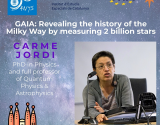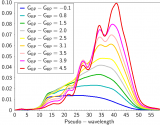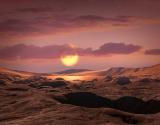The stars seem immutable. From day to day we see no appreciable changes in the sky, and our star maps are the same as those drawn by our ancestors. It seems that the stars have always existed and will continue until the end of time. However, a more precise look allows you to discover stars that vary in brightness, and from time to time, find a new star in the sky. Because stars have life, a long life compared to human life, but like all life, with a beginning and an end.
This talk will take place over two days:
- February 2, 2021 at 10:30h
- February 3, 2021 at 10:30h
About the author
Carme Jordi is an astronomer, professor in the Department of Quantum Physics and Astrophysics and the Institute of Cosmos Sciences at the University of Barcelona, and a member of the Institute of Space Studies of Catalonia. His research focuses on the space mission of the European Space Agency (ESA), Gaia, which aims to create the largest and most accurate three-dimensional map of our Galaxy by conducting a survey of one billion stars with unprecedented accuracy in position and movement. Carme Jordi is also an active science disseminator, she participates in the "Toc-Toc" program of La UBDivulga, and gives talks and conferences in several centres and entities. She is also a professor at the "Universitat de l'Experiència de la UB", where she teaches astronomy for people older than 55 years old.




